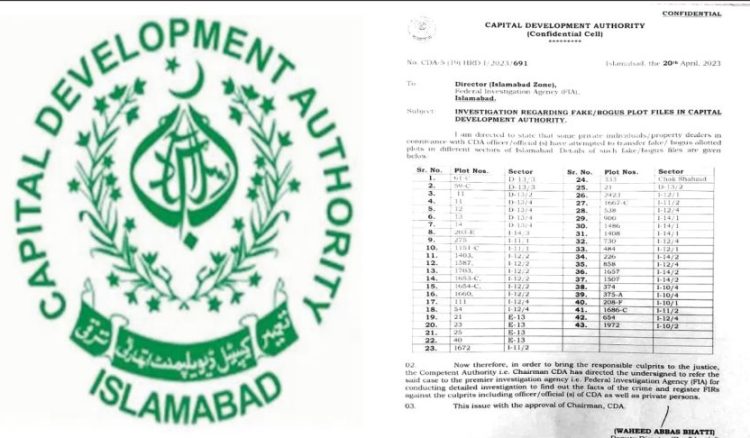Aamir Lashari
ISLAMABAD: In a startling revelation, it has come to light that as many as 1,400 unauthorized buildings have been identified in Zones IV and V of Islamabad. The Building Control Section (BCS) of the Capital Development Authority (CDA) has reportedly discovered these illegal constructions, raising serious questions about urban planning and regulatory enforcement in the city.
Adding to the growing concern, the CDA has also unveiled its identification of an additional 600 newly erected unauthorized buildings. This shocking revelation further emphasizes the need for swift and stringent action to curb the unchecked growth of these structures.
It has been reported that even before this recent discovery, around 800 buildings in Zones IV and V had already been categorized as unauthorized constructions. This points to an alarming trend of disregard for regulatory measures and raises concerns about the impact on the city’s aesthetics and infrastructure.
Citizens of Islamabad are now feeling the brunt of this unchecked construction spree, with reports of exploitation on the rise. Interestingly, the CDA, responsible for enforcing regulations, has been criticized for its passive role in addressing the issue, effectively becoming a silent spectator.
As the public seeks more information about these unauthorized structures, concerns have arisen over limited access to the list of illegal buildings. The CDA has not made the complete list readily available to the public, prompting questions about transparency and the need for greater accountability.
Shockingly, despite the mounting evidence of illegal constructions, no substantial action has been taken to either sell or demolish these unauthorized buildings. This legal inaction raises doubts about the effectiveness of the city’s enforcement mechanisms.
Compounding the issue, it has been reported that due to the CDA’s apparent negligence, an additional 600 illegal buildings have cropped up. This revelation further highlights the need for a robust regulatory framework and more proactive enforcement measures.
In an attempt to address the issue, the CDA’s Building Control Section has taken a step toward identifying these illegal structures. The section has initiated a process of geo-tagging buildings to aid in their identification, potentially streamlining enforcement efforts.
Despite the urgency of the situation, the CDA’s Enforcement Directorate has been criticized for its apparent reluctance to take concrete action against the new wave of illegal constructions. This hesitancy raises concerns about the city’s ability to effectively handle urban development challenges.
Transparency Demanded: List of Buildings to be Uploaded Online
To promote transparency and public awareness, the Building Control Section has received a request from the public and media to upload the list of illegal buildings on the CDA’s official website. This move aims to keep citizens informed and engaged in the city’s efforts to address the issue.
Lack of Action Despite Passage of Time
Despite the passage of a significant time period, there has been little to no visible action taken against the surge of new unauthorized buildings. This lack of enforcement has left citizens frustrated and concerned about the city’s ability to regulate its urban development.
Investment in Illegal Buildings on the Rise
Disturbingly, a substantial number of citizens have reportedly been investing in these illegal structures, potentially exacerbating the issue. This raises questions about the public’s awareness of the regulatory status of these buildings and the role of developers.
Government’s Response: Letters Sent to Enforcement and IT Departments
The government, in an attempt to address the issue, has taken steps by writing letters to both the Enforcement Directorate and the IT department. These letters seek to initiate collaborative efforts to tackle the problem and enforce regulations.
Authorities Claim Involvement During Enforcement Actions
Assuring the public of their commitment, authorities from the CDA have promised to accompany the Enforcement Directorate during its actions against illegal buildings. This gesture aims to rebuild public trust in the city’s regulatory mechanisms.
Despite these claims, there has been no official information shared regarding the actions taken by the Enforcement Directorate. This lack of transparency continues to fuel concerns about the city’s handling of the illegal construction issue.
As the situation unfolds, citizens and experts alike are closely watching the developments, urging swift and effective action to address the alarming rise of unauthorized buildings in Islamabad.



















